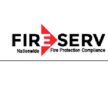
Fire sprinkler systems are a vital component of any building's fire safety system since they are designed to be very reliable and effective at controlling and extinguishing fires. Proper installation, maintenance, and testing are required to ensure that a fire sprinkler system works correctly. Otherwise, it may not perform as intended in some circumstances and may even fail.
According to a comprehensive survey conducted by the National Fire Protection Association, nearly seventy-nine percent of commercial fire sprinkler systems are either improperly installed or left unfinished. This being said, here we are discussing why fire sprinklers tend to be ineffective.
Here are a few factors that you should be aware of about the common failure of fire sprinkler systems.
1. Incorrect Location of Devices
Correct placement of fire sprinkler devices is important for the system to work effectively in the event of a fire. If the devices are not placed in the correct locations, they may not adequately cover the areas at risk of a fire. This can lead to the fire spreading and causing more damage before the sprinkler system can be activated. It is important to ensure that all fire sprinkler devices are properly installed and positioned to provide the necessary coverage and protection.
2. Faulty Pipe Joints or Connections
Fire sprinkler systems may malfunction due to faulty pipe fittings or connections. If the pipes are not properly connected or if the connections are damaged, leaks can occur. These leaks can prevent the system from delivering enough water to the sprinkler heads, preventing the system from effectively controlling or extinguishing a fire. So, it is important to regularly inspect and maintain the pipes and connections in a fire sprinkler system to ensure that they are in good working condition and to prevent failures due to faulty connections.
3. Improperly Installed or Inaccessible Valves
Improper installation or inaccessibility of valves can indeed be a reason that fire sprinkler systems fail. It is crucial that all components of a fire sprinkler system, including valves, are properly installed and maintained to ensure that the system is functioning correctly.
Inaccessible valves can make it difficult or impossible to shut off the flow of water in an emergency, which can lead to damage or other issues. A fire sprinkler system must be frequently inspected and maintained to ensure all parts are running normally.
4. Inadequate Piping Sizes or Pressure
Failure of fire sprinkler systems may be caused by inadequate piping dimensions or pressure. Proper sizing of the pipes and sufficient water pressure are important factors in ensuring that a fire sprinkler system can control or extinguish a fire effectively. If the pipes are too small or the water pressure is too low, the system may not be able to deliver enough water to suppress the fire effectively. So, it is important to ensure that the piping and water supply for a fire sprinkler system are properly sized and maintained to ensure that the system can work perfectly.
5. Improperly Installed Sprinkler Heads
Fire sprinkler system technicians often set up sprinkler heads, sometimes known simply as sprinklers. They need to do this because faulty sprinkler installations can cost businesses a lot of money to fix. Sprinkler systems detect the presence of fire and spray a tiny amount of water on the area in question. That's why you should only trust certified technicians with your fire sprinkler system's installation or upgrade.
6. Corrosion or Deterioration of The Sprinkler System Components:
The main reason fire sprinkler systems fail is corrosion or deterioration of the system components. Where the water passes through, there's a lot of friction, which wears away at the pipes and fittings. Eventually, this causes leaks and failure of the sprinkler system parts.
If a professional service provider does not adhere to all of the aforementioned guidelines, the installation of a fire sprinkler system is likely to fail.
The appropriate installation of fire sprinkler systems is crucial to ensuring that they function as intended and successfully extinguish fires in the event of an emergency. There are a few key factors to consider when installing a fire sprinkler system:
• Choose the right type of sprinkler heads for the specific needs of the building.
• Properly size the sprinkler system to ensure that it can adequately cover the entire building.
• Install the system in accordance with the manufacturer's instructions and local building codes.
• Test the system after installation to ensure that it is functioning correctly.
• Regularly maintain and inspect the system to identify and address any issues that may arise.
By following these guidelines, you can help ensure that your fire sprinkler system is installed correctly and can effectively protect your building in a fire emergency.
Conclusion
If you operate a business and looking for reliable fire sprinkler system maintenance or installation, it is in your best interest to hire a reputable company with the right credentials. You may rest easy knowing that your building is safer from the risks of fire since only trained experts can maintain and install your sprinkler system correctly.
About the Creator
Fireserv
FireServ provides installations, maintenance, repairs, and inspections for all your fire extinguishers, alarms, sprinklers, suppression systems, emergency & exit lighting. FireServ is a Nationwide Fire Protection Compliance company.






Comments
There are no comments for this story
Be the first to respond and start the conversation.